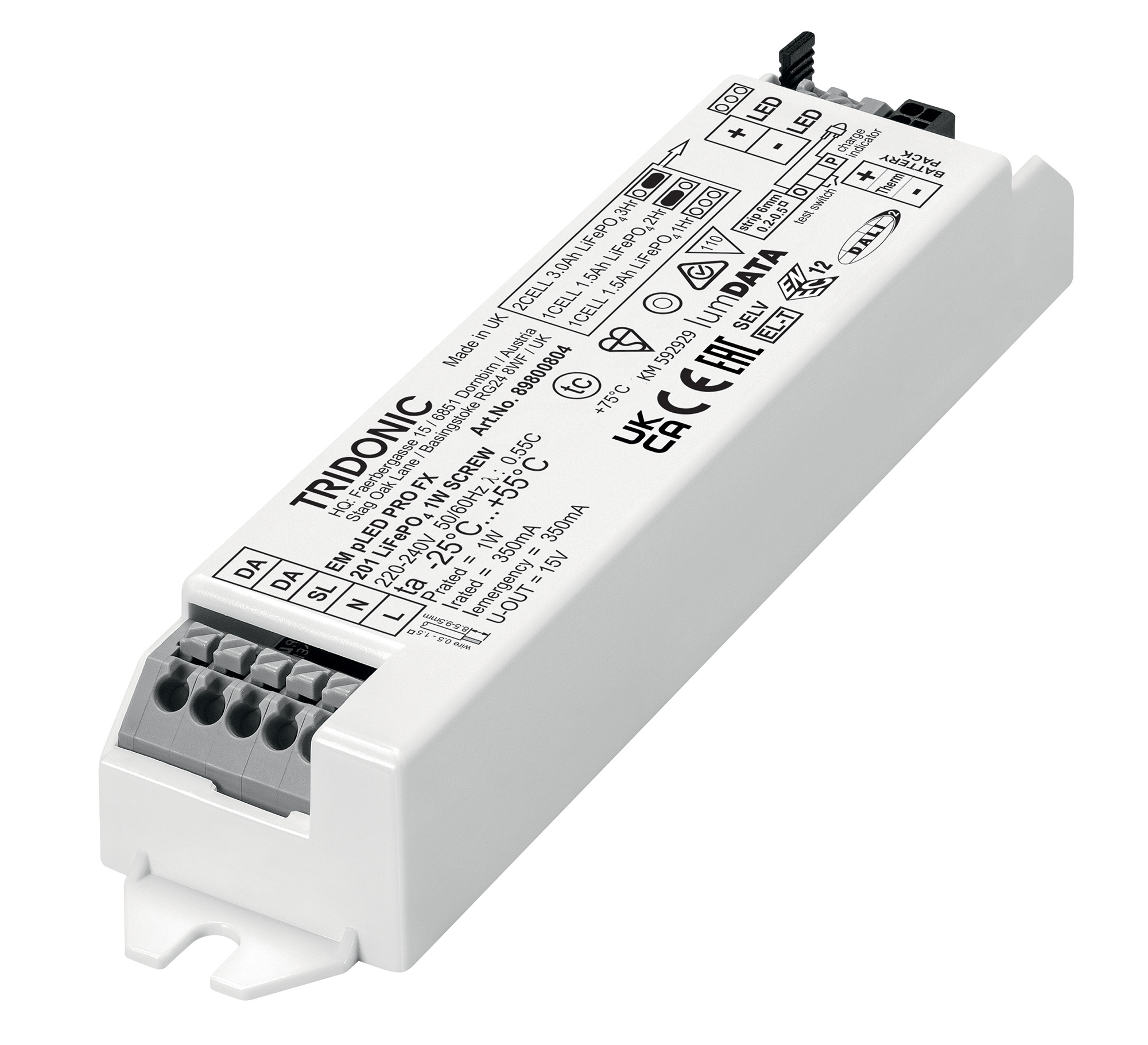Tridonic’s EM powerLED PRO LiFe- PO4 1-4W is the first generation of LED drivers for emergency lighting applications that are certified to DALI-2 Part 202.
A Standard with a Past and Future
A DALI-2 standard for “Self-contained emergency control gear” was released in September 2021. Essentially, DALI-2 Part 202 defines bidirectional communication between an emergency luminaire and the associated lighting management system. Consequently, the new part of the standard particularly focuses on multi-vendor interoperability of these safety-critical components. This means users can be confident that emergency lighting components certified to DALI-2 Part 202 “speak the same language”. This simplifies project design and makes it easier to select components for emergency lighting systems.
The standard IEC 62386-202, first re-leased in 2009, was updated to version 2 last autumn after 12 years. As a member of the DALI Alliance (formerly the Digital Illumination Interface Alliance, DiiA), Tridonic played a part in defining the DALI standards and DALI-2 by participating in committees. Tridonic was also proactively involved in the new Part 202. The company, which is headquartered in Dornbirn, Austria, is committed to taking an active role in standards that provide greater compatibility between lighting components, and therefore allow lighting solutions to be implemented more easily.
“At Tridonic, we prioritise interoperability right from the development stage,” explains Thomas Ender, Vice President Product Marketing at Tridonic. “By being actively involved in standards such as DALI-2 Part 202, we can share our expertise with the industry and ensure interoperability. We always develop our solutions in compliance with the latest standards. Because of this, we are now able to offer the first emergency lighting LED driver that is certified to DALI-2 Part 202.”
First Emergency Lighting LED Driver Certified to DALI-2
The EM powerLED PRO LiFePO4 1-4W driver marks a new generation of self-contained emergency lighting LED drivers that has been developed for emergency luminaires and emergency exit luminaires. The drivers, containing sustainable lithium iron phosphate batteries (LiFe- PO4), are the first emergency lighting LED drivers to be certified to DALI-2 Part 202. The drivers also bear the lumDATA label – Tridonic’s mark to indicate compliance with the three main DALI or D4i specifications for data collection: DALI Part 251 (luminaire data), DALI Part 252 (energy data) and DALI Part 253 (diagnostics data). That means the benefits of lumDATA now apply to emergency lighting applications too: luminaire data allows installed luminaires to be monitored efficiently, while greatly simplifying luminaire commissioning and maintenance. Energy data shows the consumption of each luminaire in the entire installation. Diagnostics data is used for predictive maintenance, because it re- cords errors in defective devices such as overvoltage or overtemperature.
Interoperability Allows Greater Flexibility
Thanks to the interoperability guaranteed by DALI-2, the certified components can be freely combined with other lighting components that are certified to DALI-2. This creates more options for luminaire manufacturers and means they do not have to depend on proprietary solutions from in- dividual manufacturers. Consequently, all DALI-2-certified emergency lighting drivers can be combined with certified DALI-2 lighting management systems without further testing being required. Plus, the re-lease of the new DALI-2 Part 202 standard means manufacturers can now have their emergency luminaires with built-in DALI- 2 emergency lighting drivers certified as DALI-2 luminaires.




